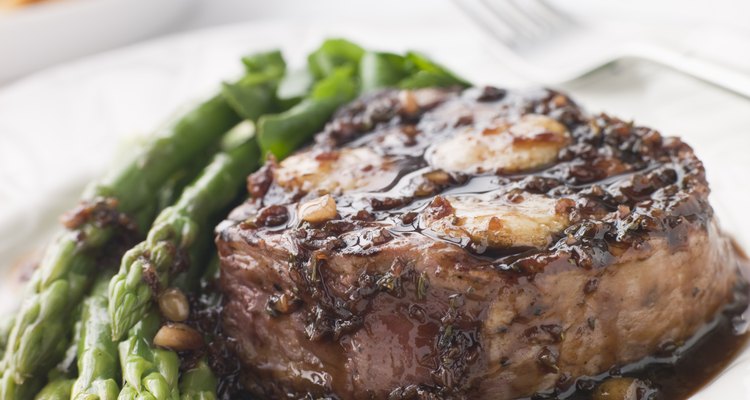
Monkey Business Images/Monkey Business/Getty Images
From the chic hot spots of downtown Chicago to the truck stop diners of rural Texas, steaks reign supreme as one of America’s favorite main courses. Chefs have made presenting these simple cuts of beef an art form. How you present a cooked steak has a major impact on the experience of the diner.
Grill Marks
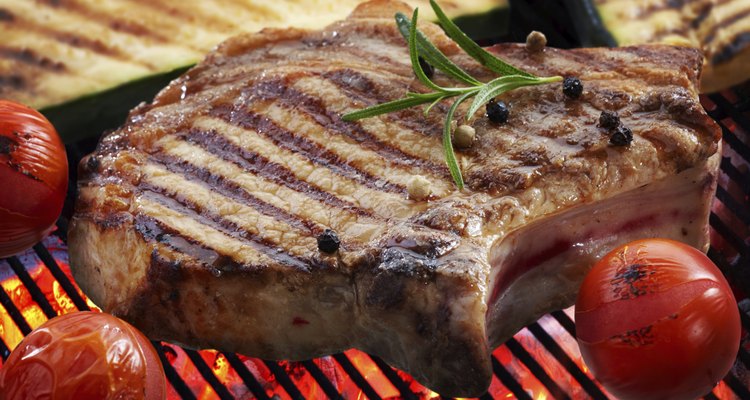
Magone/iStock/Getty Images
Crisp, scored lines on the surface of steak speak to its oh-so-recent, primal contact with the metal rails of a hot grill. Keep grill lines sharp by not moving the steak around on the grill excessively while cooking. Know the proper times for cooking each side of the steak based on the thickness of the steak and ultimate level of doneness. For each side, set the steak down on the grill and leave it alone. Don’t move it at all for char-colored, straight grill marks, or move it only once for crisscrossing grill marks. To create diamond-patterned, crisscrossing grill marks, rotate the steak approximately 45 degrees halfway through cooking each side.
Plating
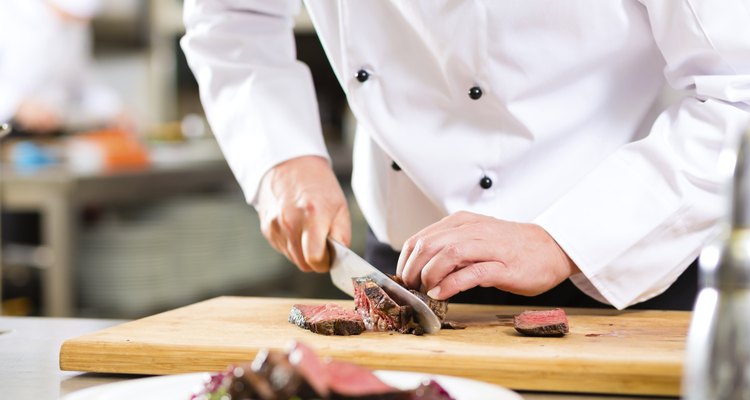
kzenon/iStock/Getty Images
For some, approaching a plate a food becomes difficult when the steak shares the plate with grease drips, smears and fingerprints. Always start with a clean plate and have a clean plating station that is separate from the cooking area. Choose a plate that's large enough to leave some space between the steak and the side dishes and the edge of the plate, or the plate will look crowded. When plating, pick up the ready steak from the grill with tongs and set it on the plate without scooting it around, to avoid smears. Avoid touching the rim of the plate with your fingers, and transport the plate from the bottom with an outstretched hand. Inspect the plate before serving and wipe off any drips or fingerprints with a dry, clean, lint-free cloth.
Side Dish
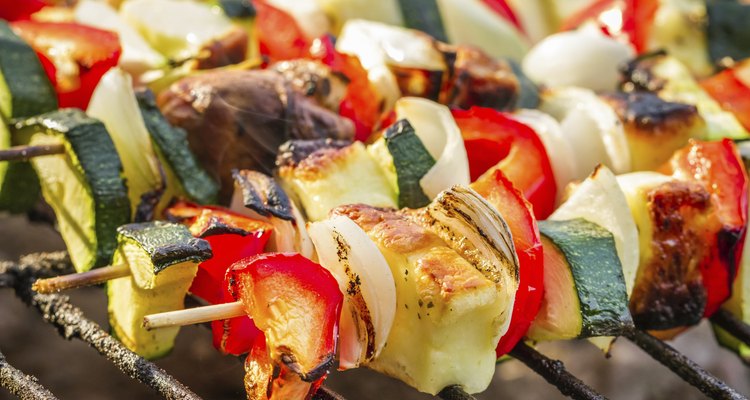
Shaiith/iStock/Getty Images
When adding side dishes, think about the rim of the plate as the frame of a painting. Using the steaks and other side dishes, create a pleasing composition within the “frame.” Consider placement, texture, color, shape and even the spaces in between items. For something simple and colorful to complement the steak, consider spicy roasted Spanish vegetables, made with squash and peppers. For height, try placing a skewer of grilled vegetables at an angle across the top of the steak. When placing two or more items on a plate with a steak, use portions and placement that ensure a balanced arrangement. Hearty items like potatoes should not detract from or cover the steak.
Garnish

Wavebreakmedia Ltd/Wavebreak Media/Getty Images
A little bit of garnish does wonders to tie together multiple food items or to add a final detail, such as a touch of color or sprig of texture, to a plate of food. Help unify multiple items on a plate by sprinkling the entire plate lightly with freshly chopped parsley. The fallen constellations of parsley flakes will decorate both the plate and the food items. Another options is to add one or two well-placed items right on top or right next to the steak, such as a grilled chili pepper or a cherry tomato and a full ring from an onion. To create the sense of bedding, tuck the stems of a couple sprigs of thyme of other fresh herbs under the steaks.
Related Articles

Culinary Plating Techniques

How to Cook Venison Backstrap Steaks on ...

What Meals Can You Make With Cut-Up ...

Brio Tuscan Grille Nutrition Information
How to Cook Steak Florentine Pinwheels

How Hot Should a Grill Be for Steaks?

How to Cook Steaks on a Weber Kettle

How to Grill Frozen Tilapia

Easy Ways to Cook Pork Steak

How to Grill an Orange

How to Cook Venison Backstrap Steaks on ...
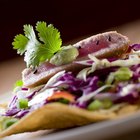
How to Cook Ahi Belly

A Good Way to Cook Squid Steaks
How to Cook Steaks on Granite

Frickers Nutrition Guide

Formal Dinner Menu Ideas
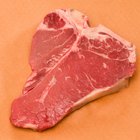
How to Score a Steak

How to Cook Top Sirloin Steak on a ...

How Long to Cook a Boneless Chuck Eye ...

How Long Does It Take for Asparagus to ...
Resources
Writer Bio
Mason Howard is an artist and writer in Minneapolis. Howard's work has been published in the "Creative Quarterly Journal of Art & Design" and "New American Paintings." He has also written for art exhibition catalogs and publications. Howard's recent writing includes covering popular culture, home improvement, cooking, health and fitness. He received his Master of Fine Arts from the University of Minnesota.
Photo Credits
Monkey Business Images/Monkey Business/Getty Images